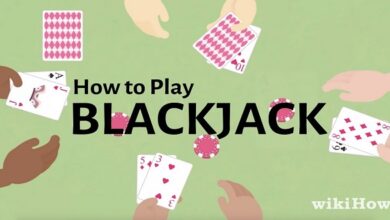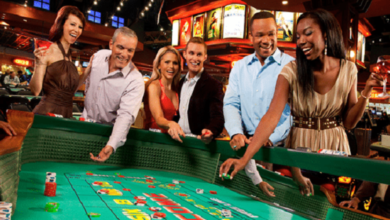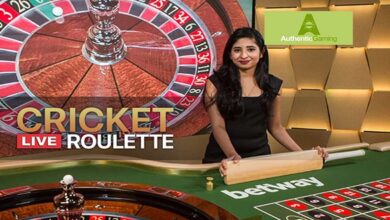Not Just For High Rollers: Baccarat

Counting Down the Baccarat Basics
Baccarat is a simple card game: In the regular version of baccarat (also called formal, traditional, or big baccarat), the croupier, or dealer, deals only two hands, no matter how many players are seated at the table — and as many as 14 can play. One hand is the player’s hand, and the other is the banker’s hand. The object of the game is to bet on which of the two hands will come closest to a total of 9 points, also called a natural (a total of 8 points is also a natural, but it loses to 9). Players make all bets before the croupier deals the cards, and unlike blackjack, you can’t make additional bets, such as doubling down, splitting, and so on. You have only three bets to choose from in baccarat. You can bet on
Formal baccarat: High stakes, high rollers
Many high rollers are more interested in testing their luck than exercising their math skills. So baccarat is often the high-stakes game of choice for the wealthiest gamblers. Minimum bets vary greatly from club to club, but posted maximums are typically $2,000 to $4,000. However, the larger casinos often extend higher limits to premium players, and the maximum bet can reach six figures — depending on the high roller’s credit line and how much risk the casino is willing to take.
Minibaccarat: Less glitz, lower stakes
Is your tuxedo at the cleaners? Or is you’re betting bankroll a little low these days? If the formality and high stakes of the regular baccarat table isn’t to your taste, then minibaccarat may be the game for you. With lower minimum bets ($2 to $5), this condensed version gives low rollers or the uninitiated a taste of baccarat. It also offers the same low-house advantage of regular baccarat.
Positioning yourself to play
Feel free to sit in any open seat at the table — your position won’t help or hinder your game in any way, nor does it matter how many people are playing. Then observe the unique aspects that distinguish a baccarat table (formal and minibaccarat) from any other gaming surface.
On the formal table, you also see a boxlike device called the shoe, which houses the cards. At the beginning of a game, one of the three croupiers gives the shoe to a player, who acts as the banker and deals the cards from the shoe.
Betting the banker (or the player)
Before the banker deals the cards, the caller asks you to place your bets. So there you are — you haven’t received your cards, and yet you must decide the winner: the player or the banker. Or will you have a tie? As I explain earlier in this chapter in “Counting down the Baccarat Basics,” you’re betting on which hand — the player’s or the banker’s — you think will come closest to nine, the highest possible score, or if you think you’ll have a tie. Baccarat is simply a matter of luck. No skill or card counting or complex mathematical formula can beat the house, but knowing that the odds favor the banker’s hand can give you an edge.
Wagering on ties
Don’t ever bet on the hands to tie. Even though the payoff when you win is far better (8 to 1 instead of even money), ties occur only about once every 91 ⁄2 hands, making the reward not worth the risk (house edge is a whopping 14.36 percent). This bet is a waste of your hard-earned money.
Note taking and keeping score
Taking notes is a waste of time. Because of superstitious or misinformed players, casinos routinely stock score cards and pencils at baccarat tables for players to keep track of how the hands are running. The past dozen or so hands are no indication of how future hands will play out, so the pencil and paper are more useful for your grocery list.
Counting cards
No successful card-counting system exists for baccarat. Even though some studies have shown that the low cards favor the player’s hand and high cards favor the banker’s hand, statistically speaking, the margin is so small that card counting really offers no advantage.
Relying on instinct
Some people think they were born under a lucky star. They believe they have the uncanny ability to predict whether a coin lands on heads or tails with accuracy. Or perhaps their instincts at the tables tell them when a hot streak is about to begin . . . or end.
Summary
You have no way to turn negative odds into a positive expectancy game. Although baccarat is definitely one of your best bets because the slow pace (especially in the formal version) and slim house edge combine to make it a good value for you, over the long run, you end up a slight loser despite the amount of mojo you think you have working for you. You may win in the short term, but no amount of guesswork can swing the odds in your favor. Don’t even try to rely on your instinct. Just drink in the pageantry and ambiance of this elegant game and enjoy the ride. And remember: Don’t be intimidated by the posh crowd. You have every right to sit down next to the billionaires and try your luck at this historic game.


